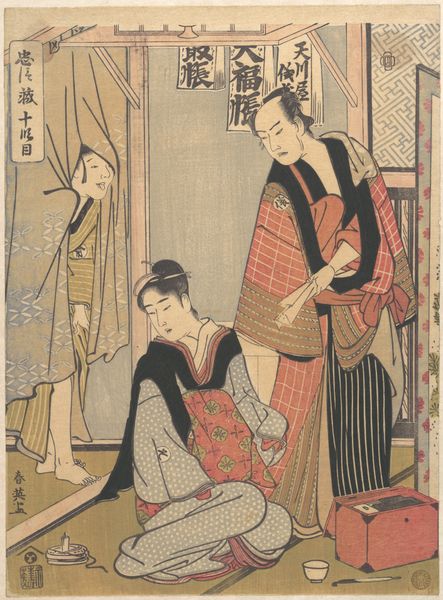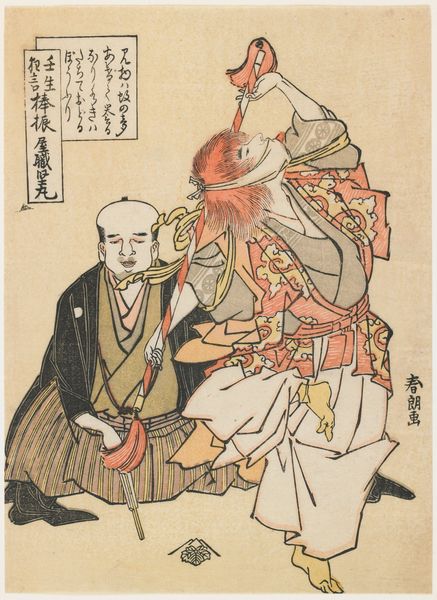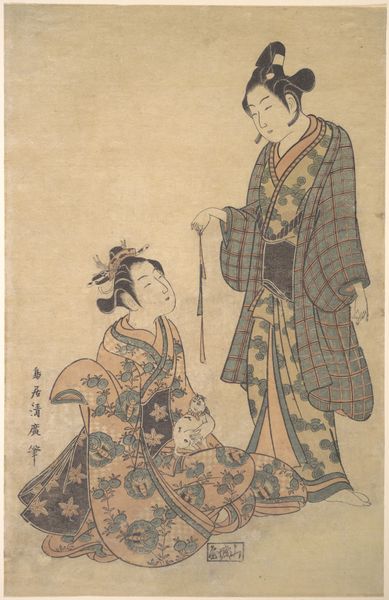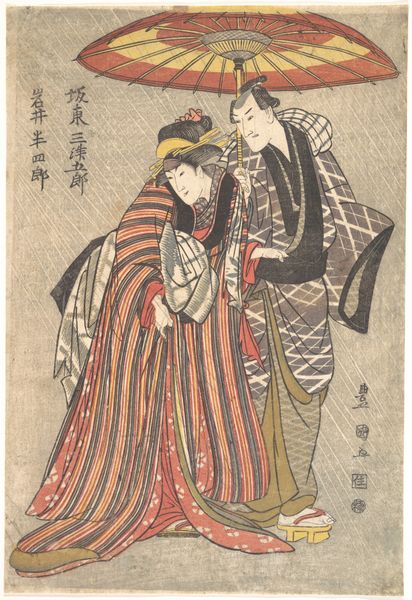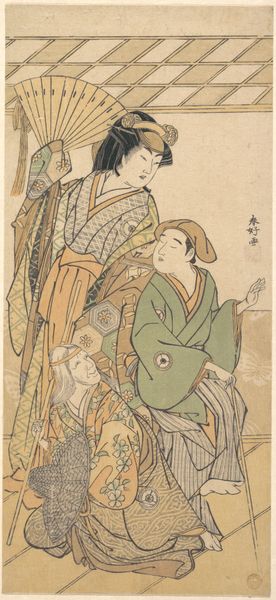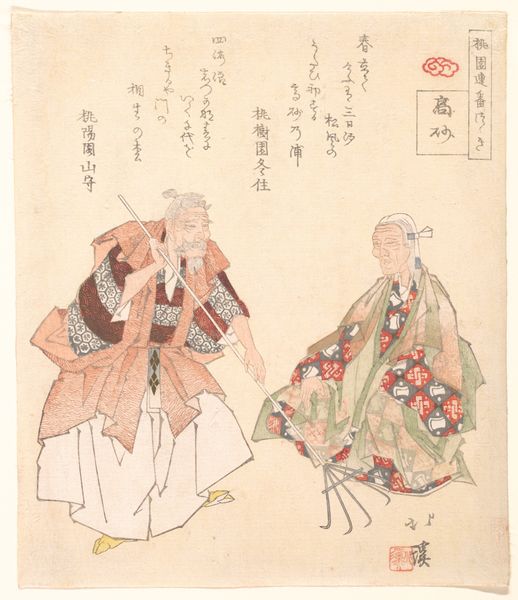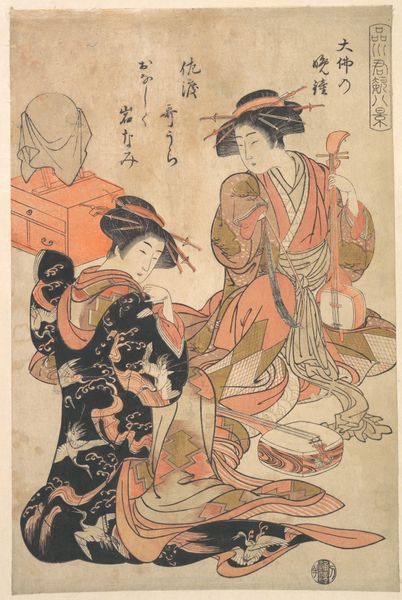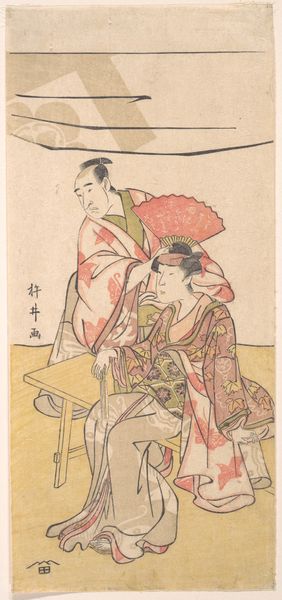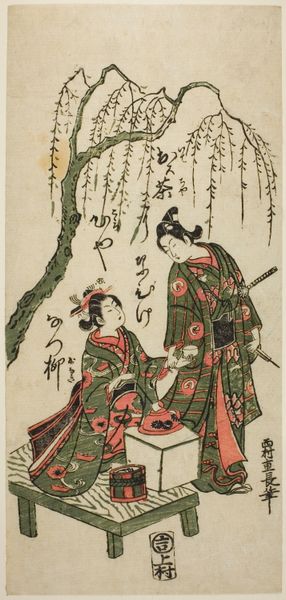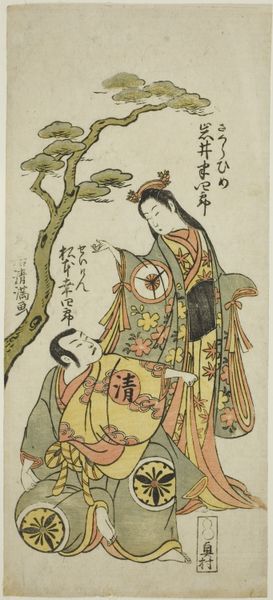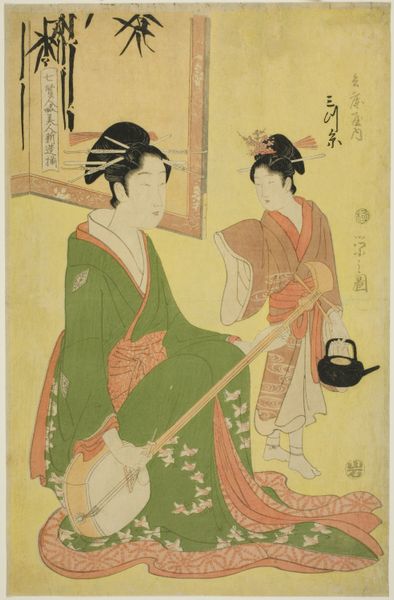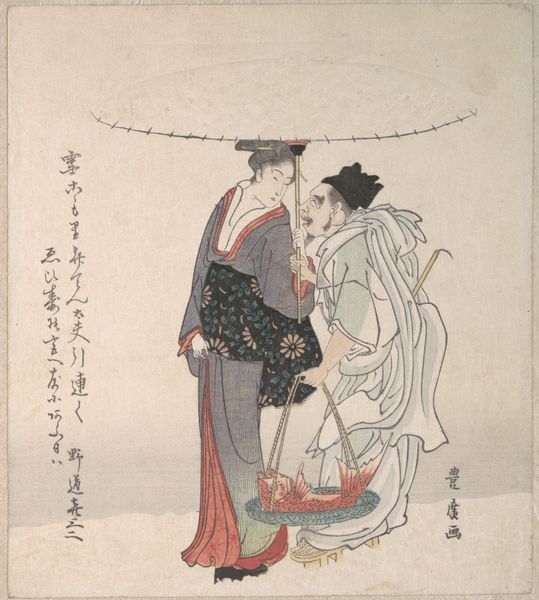
Act 4- Yuranosuke in His Master's Suicide Scene from the Forty-seven Ronin c. 1795
0:00
0:00
color-woodblock-print, print, woodblock-print
#
color-woodblock-print
#
narrative-art
# print
#
asian-art
#
ukiyo-e
#
figuration
#
woodblock-print
Dimensions: 10 7/16 × 7 11/16 in. (26.5 × 19.6 cm) (image, sheet, chūban)
Copyright: Public Domain
Editor: We’re looking at *Act 4 - Yuranosuke in His Master's Suicide Scene from the Forty-seven Ronin*, a color woodblock print by Katsukawa Shun'ei, from around 1795. There's such a heavy sadness in this image; the man's downward gaze, the woman's bowed head… it feels laden with unspoken grief. How do you interpret this work? Curator: That sadness you're picking up on is incredibly pertinent. Ukiyo-e prints weren’t just decorative; they often held deep political and social significance, functioning as a form of cultural critique and historical record. The tale of the 47 Ronin itself speaks volumes. Knowing that the story focuses on samurai seeking vengeance after their lord is forced to commit ritual suicide, how does that change what you see in the print? Editor: It reframes it entirely! Suddenly, it’s less about individual grief and more about duty, loyalty, and the weighty consequences of social injustice. Is that why they both seem resigned? Curator: Precisely. Shun’ei, as an artist, might have been using the familiar narrative to subtly comment on contemporary social and political issues. What do you think of the positioning of the two figures in relation to one another, given what we now know? Editor: The woman, slightly behind and above, almost seems to be witnessing rather than participating directly in the act, suggesting women occupy a liminal space of passive observers or are themselves rendered powerless within such societal expectations and moral codes of conduct. Curator: Excellent point! Their garments speak too of established hierarchies. Notice how intricate her kimono and hairstyle are versus his clothing. Class and gender clearly affect their roles within this tragedy, revealing the nuanced power dynamics at play in feudal Japan. Editor: I never would have considered the image through those lenses. It feels like unlocking a secret language embedded within the art. Curator: Absolutely. By exploring these historical and social layers, we can recognize the artist’s potentially subversive voice—challenging societal norms, even subtly, within the seemingly innocuous framework of ukiyo-e.
Comments
No comments
Be the first to comment and join the conversation on the ultimate creative platform.
